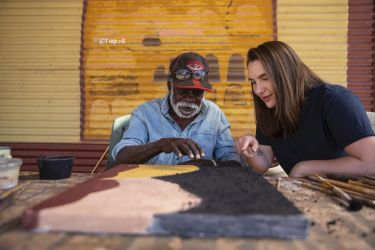
Arts & Culture
Conserving Australia’s cultural record

When Aṉangu artist Reggie Uluru’s sculpture was damaged, conservators from the Grimwade Centre for Cultural Materials Conservation repaired the work, ready for repainting
Published 4 April 2025
Reggie Uluru has been painting in Australia’s Red Centre for over 15 years.
A Senior Aṉangu artist, Reggie Uluru and his people are the Traditional Owners of Uluru, situated within the Uluṟu-Kata Tjuṯa National Park.
His work features colourful depictions of Wati Ngintaka, the Perentie Lizard Man.
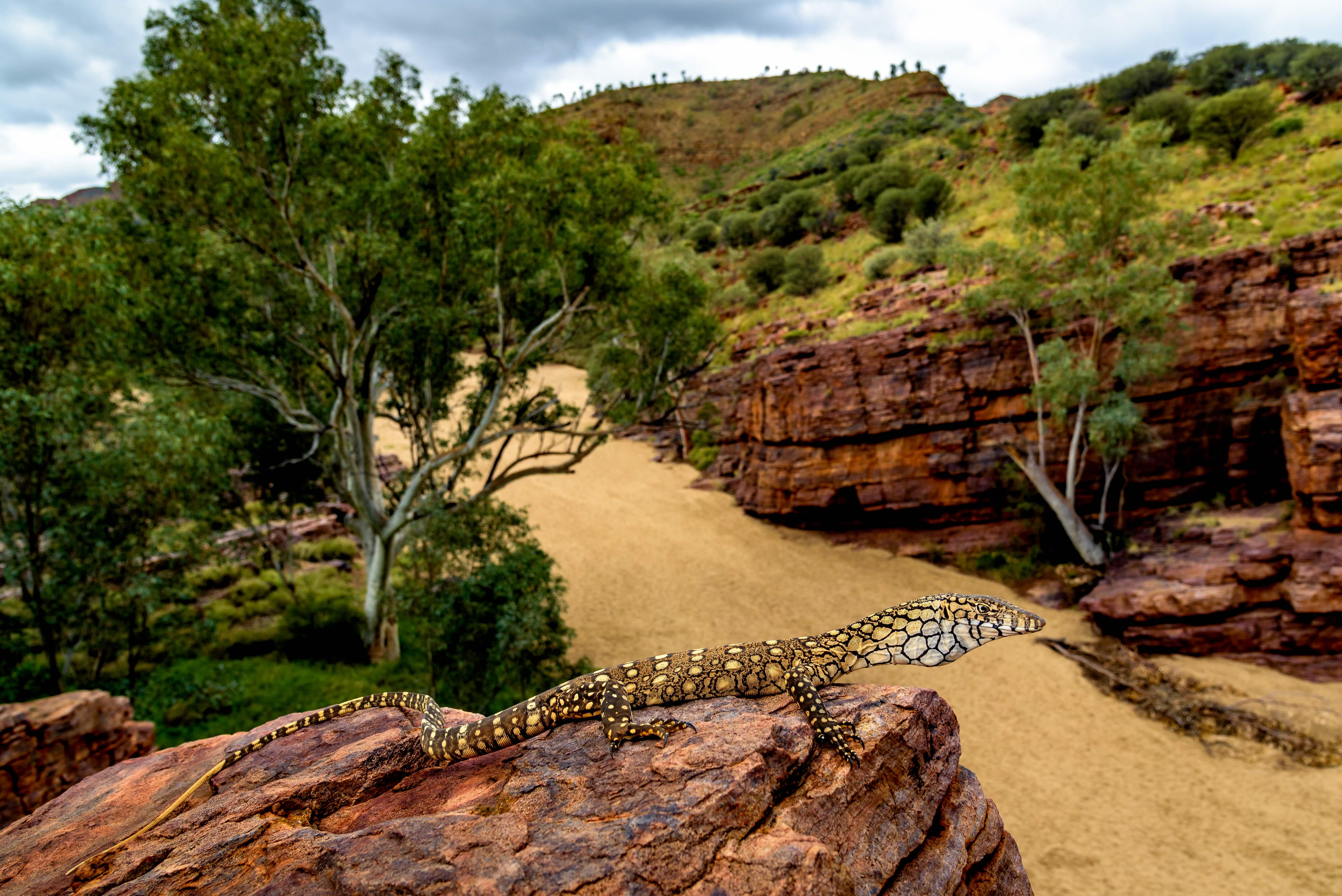
The story of Wati Ngintaka has been passed down since the Creation Time. It recounts the journey of the Perentie Lizard Man who travelled across northern South Australia.
On his way, he released Ngintaka lizards to obscure his tracks, ultimately reshaping the land into the mountainous country known as the Mann Ranges.
Reggie paints the story in the colours of Uluru, combining the forms of the Perentie with the landscape in his stylistic layering of multicoloured dots, its body emerging from the speckled camouflage as in life, where the perentie is rarely seen because of its shyness and remote habitat.
During the COVID-19 pandemic lockdown, Reggie experimented with sculptural pieces made from recycled materials gathered around Mutitjulu.

Arts & Culture
Conserving Australia’s cultural record
He created a life-size plaster Ngintaka with Walkatjara Art, Mutitjulu Community’s Art Centre at Uluru.
In contrast to his Perentie paintings, Reggie’s sculptural Ngintaka stands out proud and bright against the ochres of the gallery building, inviting us to connect to the Aṉangu’s ancient story of how Ngintaka made the landscape of Uluru what it is today.
Sadly, in 2023, some of the art centre sculptures were vandalised, including Reggie’s Ngintaka, which suffered extensive fractures, with two of its feet broken and its tail barely hanging together in three pieces.
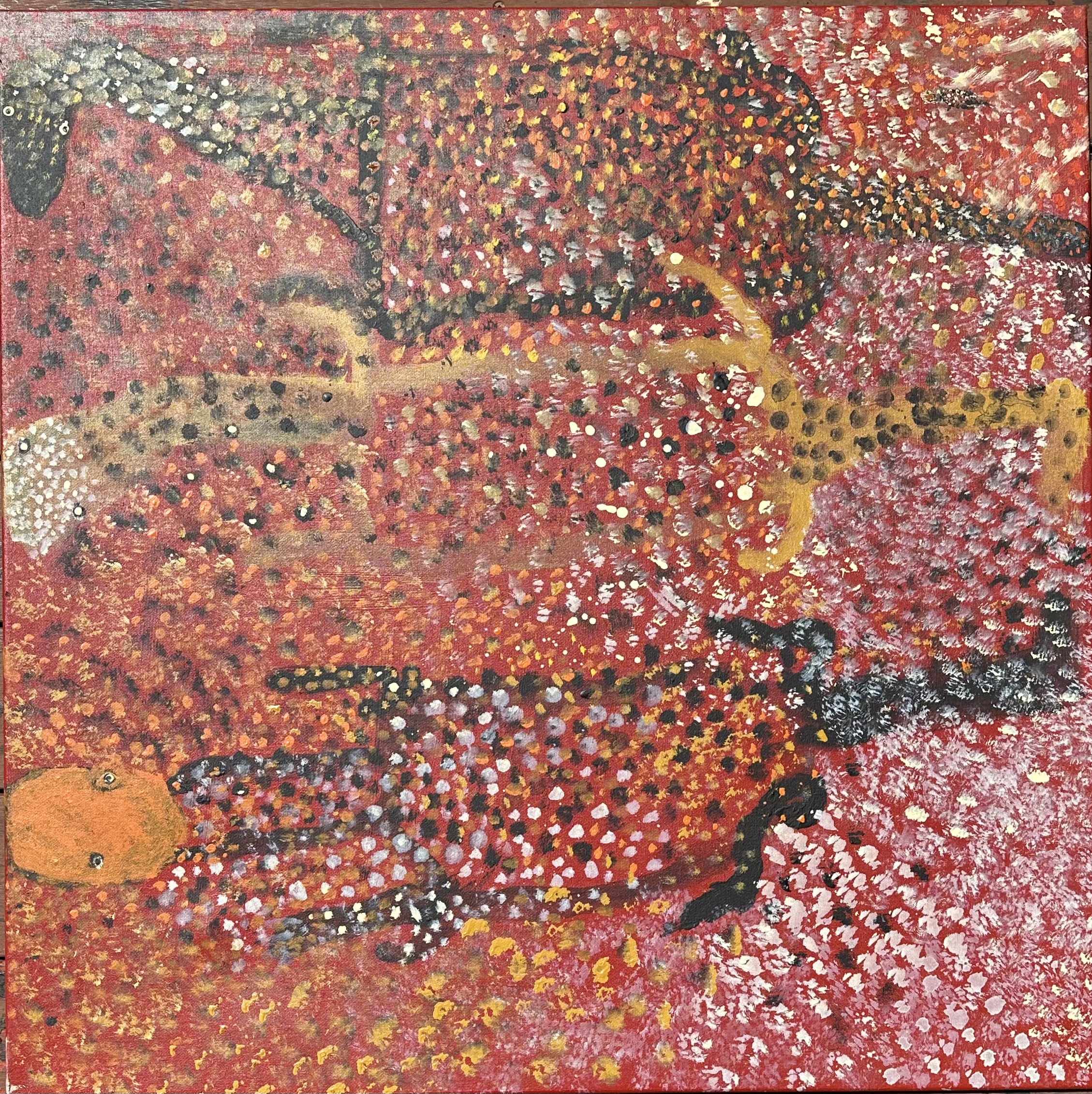
In late 2023, while in Uluru to work with Park Rangers on some vandalised rock art, I visited Walkatjara Arts to see the broken sculpture.
It was agreed with Reggie and Arts Centre manager Nancy Green to send the broken Ngintaka sculpture down to the Grimwade Centre for Cultural Materials Conservation for repair.
Once there, a small group of students worked with me to conserve the sculpture as part of their advanced practice studies for their Master of Cultural Materials Conservation degree.
On arrival at the Centre, second-year students Ting Hu and Wilson Fok and I carefully unpacked Ngintaka from its plywood crate before we assessed the damage and began developing a treatment plan.

Arts & Culture
Rebuilding cultural heritage after disaster
On inspection, not only was the tail badly damaged, but the two front legs were fractured, as well as the Ngintaka’s distinctive neck.
Other impact damage was found on different parts of the body, resulting in dents and fine cracks across its painted surface.
Needless to say, Reggie’s paintwork in these areas had also suffered, so the plan was to restore the Ngintaka’s structure so he could repaint the affected areas.
The first decision we made was to concentrate on reassembling the tail, as this would then determine the method for fixing the damaged legs and neck.
Ting and Wilson began the delicate operation of separating out the tail.
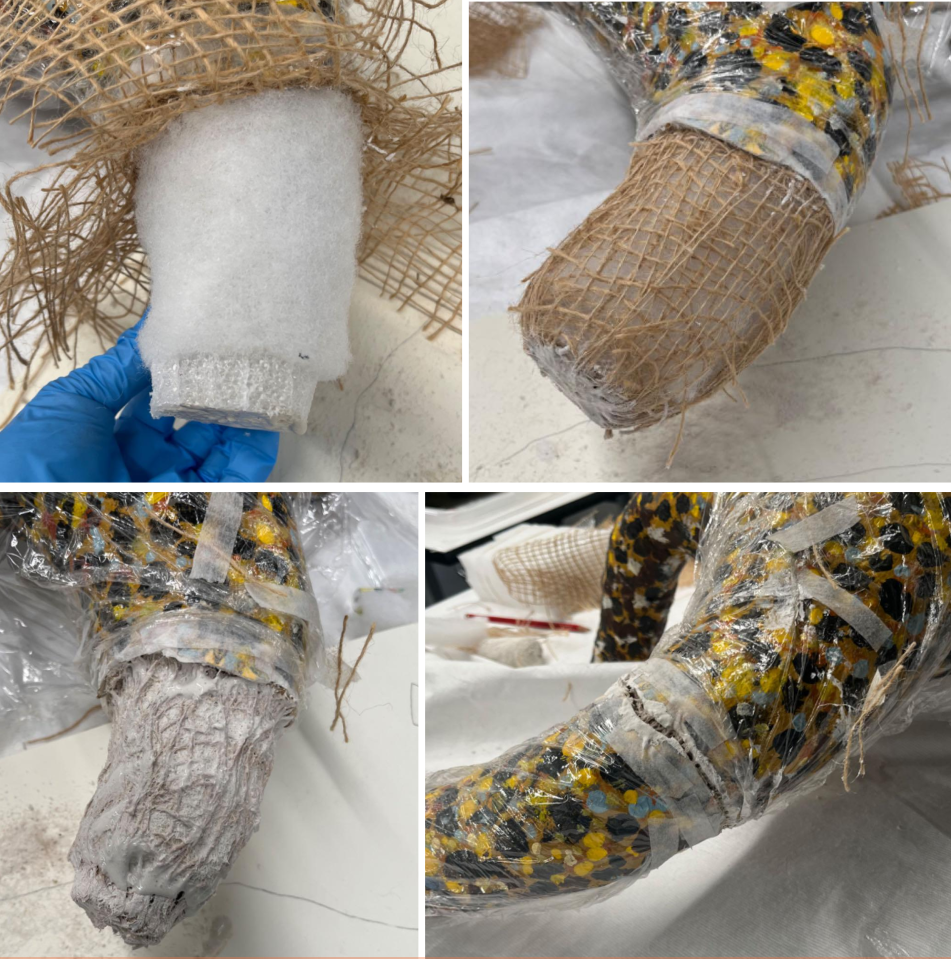
Ever fearful that it would shatter, they found the tail to be made of a very thin crepe bandage soaked in fine plaster.
The bandage was wrapped over an ingenious armature of scrunched-up bin bags and an electrical cable, terminating in a cardboard biscuit box fixed inside the Ngintaka’s hips.
The immediate problem was working out how to make the repair light enough to prevent it from breaking across the weakest part due to the weight of any new material.
As such, inserting a metal armature was quickly discounted and instead, lightweight polyethylene foam cores were carved as internal connectors to join each broken part.

Arts & Culture
Indigenous memory-making meets architecture
A series of mockups were made to refine the method of fixing the cores with the addition of a layer of synthetic batting (Dacron™) made of polyethylene terephthalate, followed by a thin hessian layer proving the best combination.
The whole package was soaked in Polyfilla™ and then slotted together piece by piece onto the sculpture.
This method was then transferred to the front legs and neck, and throughout the project, Ting and Wilson supplied updates in the form of short videos and images to Nancy for Reggie, who expressed his happiness with the work.
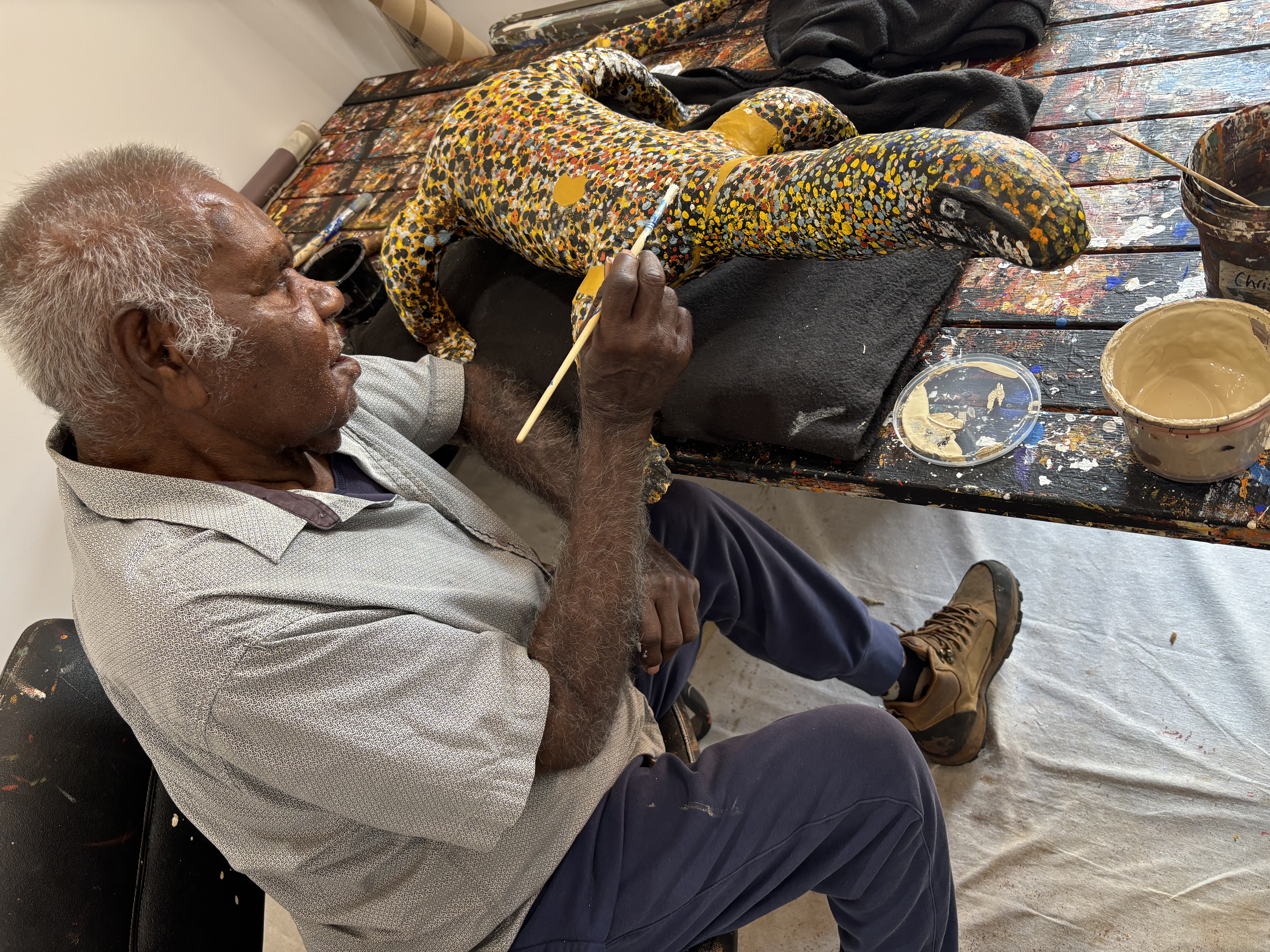
As the subject drew to an end, Ting and Wilson submitted their final assignments with the work to date.
However, they admirably volunteered to complete the project by September 2024 to ensure the Ngintaka’s return to Uluru for Reggie to repaint it.
This extra work also included repurposing the original crate the work was sent in from Walkatjara Arts, where it arrived safely in late September.
Coincidentally, I was working in Uluru again in 2024 and was able to meet up with Reggie. He had already begun repainting the repaired areas of the Ngintaka.
Various dealers wanted to exhibit the Ngintaka sculpture, including at D’Lan Contemporary Art in New York, where Reggie will show in October 2025.
The piece has now been purchased by the Mutitjulu Community Aboriginal Corporation in Uluru, so Wati Ngintaka (Perentie Lizard Man) will remain in Mutitjulu as part of the community’s collection.